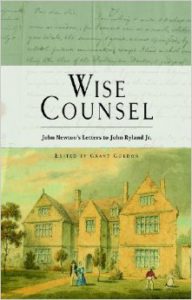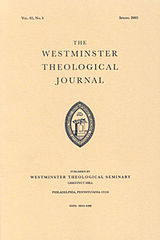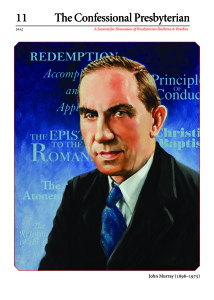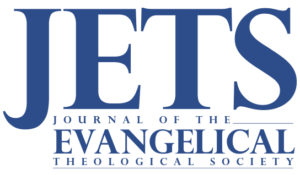First, we must understand that as long as Christ remains outside of us, and we are separated from him, all that he has suffered and done for the salvation of the human race remains useless and of no value for us. Therefore, to share with us what he had received from the Father, he had to become ours and to dwell within us. For this reason, he is called ‘our Head’ [Eph. 4:15], and ‘the first-born among many brethren’ [Rom. 8:29]. We also, in turn, after said to be ‘engrafted into him’ [Rom 11:17], and to ‘put on Christ’ [Gal. 3:27]; for, as I have said, all that he possess is nothing to us until we grow into one body with him.
Calvin, Institutes, 3.1.1.

 This is a collection of letters, many previously unpublished, from the Anglican minister John Newton to the Baptist minister John Ryland, Jr. The name of John Ryland, Jr. may be unknown to many, but he was one of the rope-holders for William Carey, who is well-known for his pioneer missionary work in India. The letters begin when Ryland is a young man and continue into Newton’s last years of life. The title of the book captures their nature. These are letters of wise counsel from an older minister to a younger. Since they cover such a long span of time, a whole variety of life’s experiences are commented upon. These are well worth reading and meditation.
This is a collection of letters, many previously unpublished, from the Anglican minister John Newton to the Baptist minister John Ryland, Jr. The name of John Ryland, Jr. may be unknown to many, but he was one of the rope-holders for William Carey, who is well-known for his pioneer missionary work in India. The letters begin when Ryland is a young man and continue into Newton’s last years of life. The title of the book captures their nature. These are letters of wise counsel from an older minister to a younger. Since they cover such a long span of time, a whole variety of life’s experiences are commented upon. These are well worth reading and meditation. This article is the second in a recent trilogy of articles by Poythress on the opening chapters of Genesis. The heart of the article is a step through the creation week with particular attention given to correlations between God’s creation activity and normal providence. For instance, in normal providence heavy rains may cause water to cover dry land. Later the water recedes to show the dry land. This ordinary providence aligns with God’s causing the dry land to appear out of the water in creation. Or, God specially created the animals, but animals are “created” providentially though the normal processes of birth. I thought that Poythress sometimes showed real correlations between creation and providence, but other times I thought he was trying too hard. For instance, he sees a correlation between the original gift of food to eat in Genesis 1:29 and eating of plants today by humans. However, this is a stretch because God’s speech is looking beyond the creation week to the future. It’s not clear that something beyond ordinary providence was ever intended.
This article is the second in a recent trilogy of articles by Poythress on the opening chapters of Genesis. The heart of the article is a step through the creation week with particular attention given to correlations between God’s creation activity and normal providence. For instance, in normal providence heavy rains may cause water to cover dry land. Later the water recedes to show the dry land. This ordinary providence aligns with God’s causing the dry land to appear out of the water in creation. Or, God specially created the animals, but animals are “created” providentially though the normal processes of birth. I thought that Poythress sometimes showed real correlations between creation and providence, but other times I thought he was trying too hard. For instance, he sees a correlation between the original gift of food to eat in Genesis 1:29 and eating of plants today by humans. However, this is a stretch because God’s speech is looking beyond the creation week to the future. It’s not clear that something beyond ordinary providence was ever intended.
 Lloyd-Jones, D. M.
Lloyd-Jones, D. M.  McGraw, Ryan, trans. “Johannes Wollebius’s Paecognita of Christian Theology from
McGraw, Ryan, trans. “Johannes Wollebius’s Paecognita of Christian Theology from  The thesis of Burer and Wallace in their NTS article is that one should take “
The thesis of Burer and Wallace in their NTS article is that one should take “